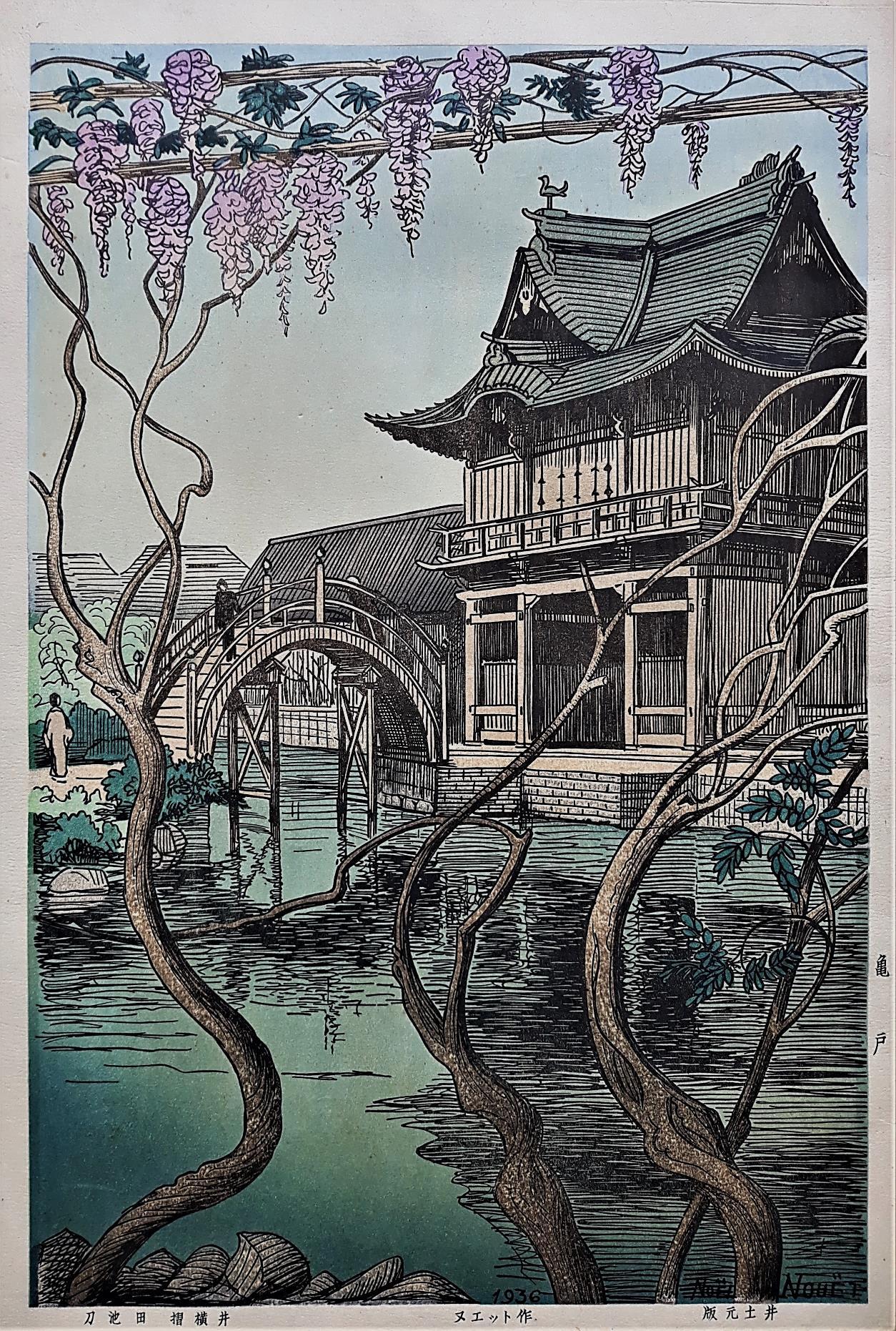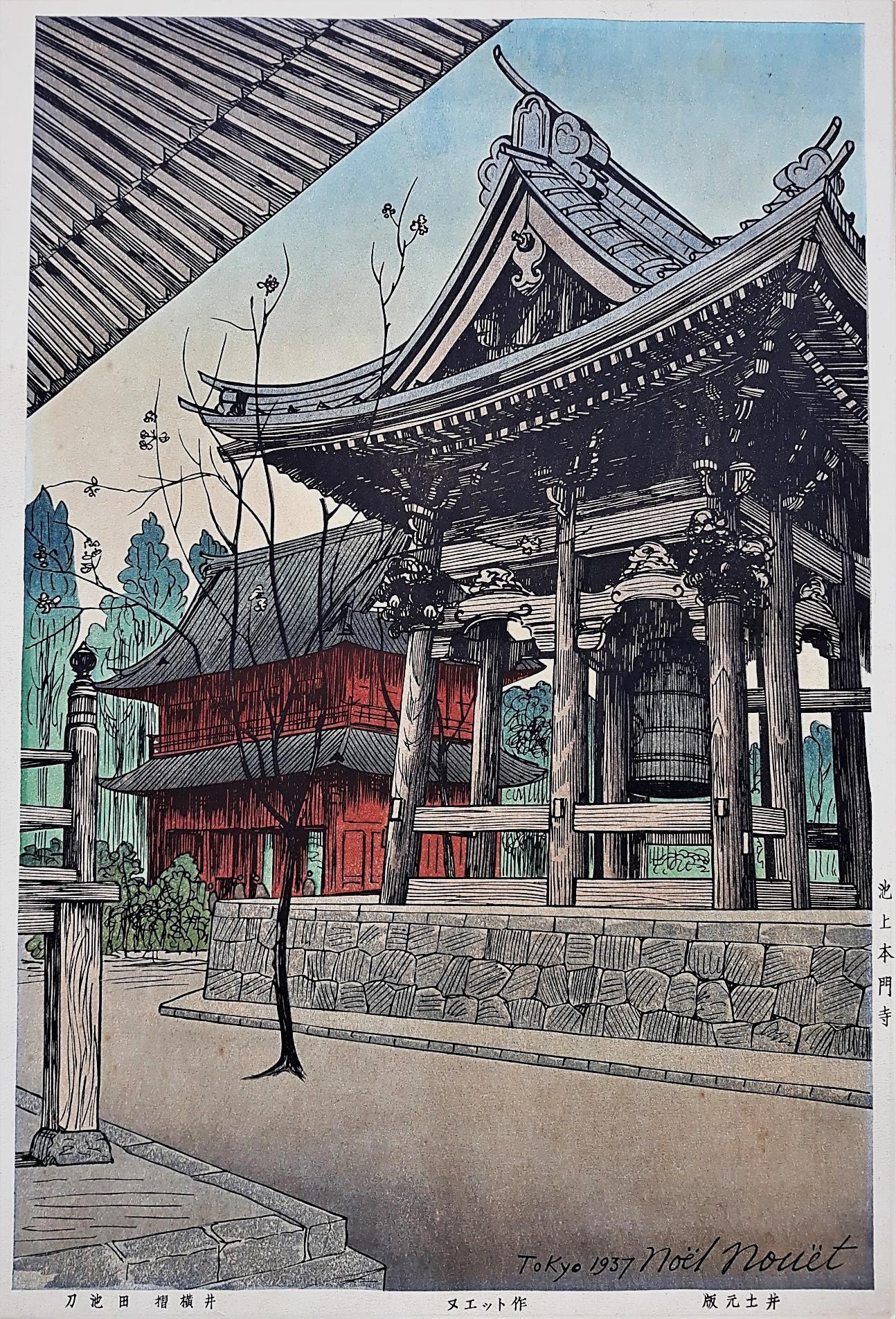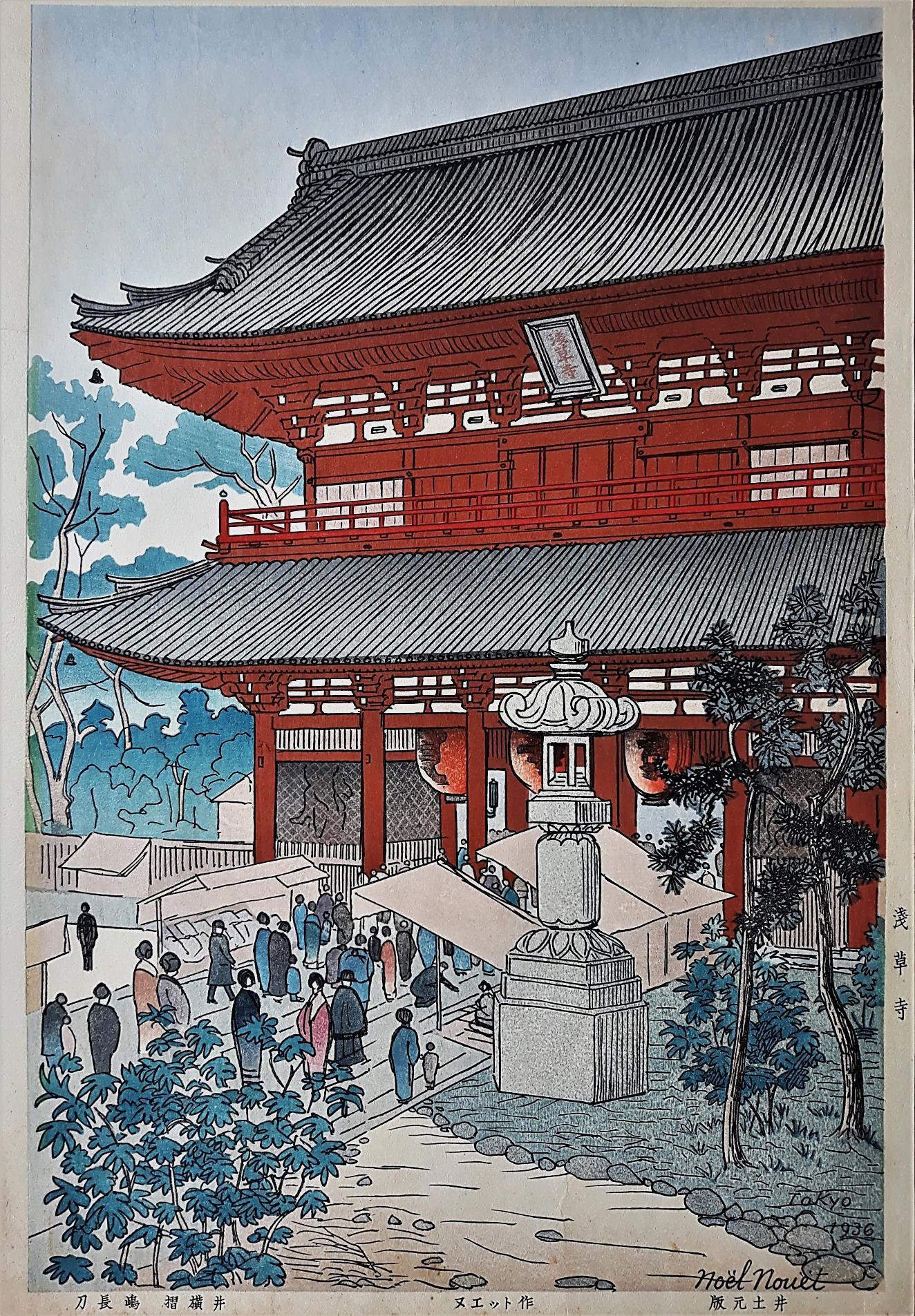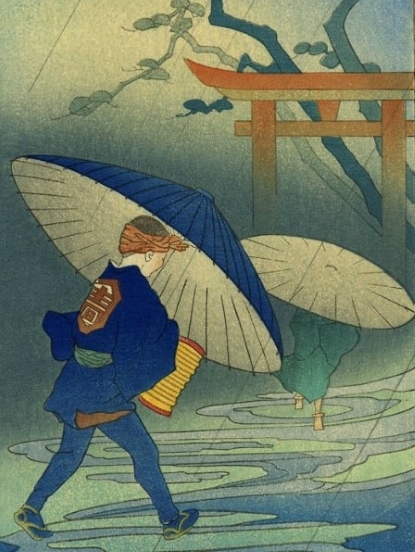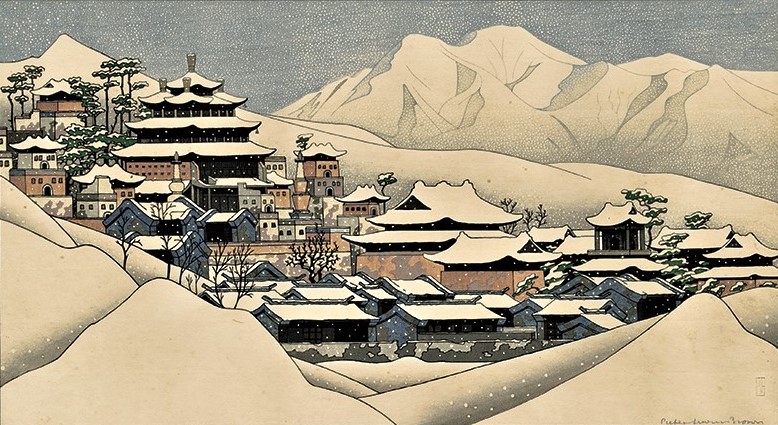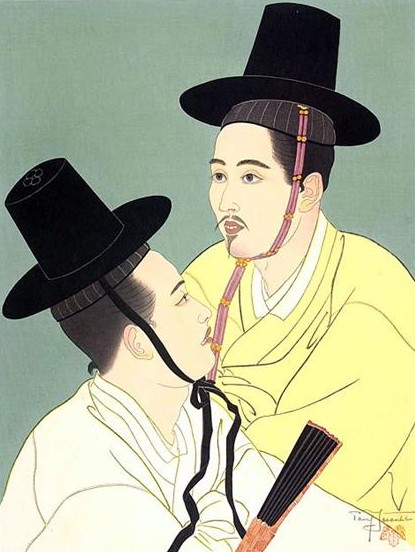NOËL NOUET (1885-1969)
Born in 1885 in Brittany, son of a doctor, Frédéric Anges Nouet had the chance to discover from his childhood a collection of prints by Utagawa Hiroshige (1797-1858) that his mother had acquired from the first French Ambassador to Japan from 1859 to 1864, Gustave Duschesne de Bellecourt. This admiration for the last great Master, with Hokusai, of the world of Ukiyo-e has guided Noël Nouet's entire life as an artist.
After excellent studies at the Lycée de Pithiviers then at the Sorbonne, he works for a publishing house (Renaissance du livre), changes his first names to Noël and attempts a literary career by publishing, from 1910, collections of poems marked by his Christian faith. He gives lessons to foreign students, meets in 1912 a couple of Japanese poets staying in Paris, Tekkan Yosano and his wife Akiko, forging a long friendship with them, and then frequents Japanese artistic circles in Paris. In 1926, he accepted a proposal from the Japanese Embassy to take up a post as a French teacher at the High School in Shizuoka, a town not far from Mount Fuji, about a hundred kilometers southwest of Tokyo. In 1929, he was appointed professor at the School of Foreign Languages in Tokyo and his stay would last until 1962 !
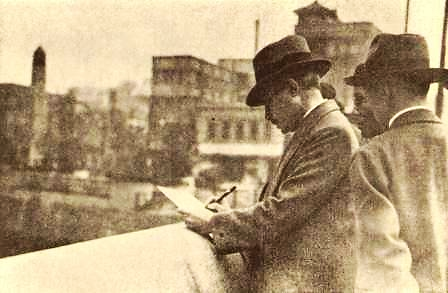
Noël Nouet took the opportunity to forge close ties with local artists, in particular with Ishii Hakutei, a painter marked by Western painting. However, still haunted by the memory of Hiroshige, he strived to return to the places once painted by the Master and to draw them, in pen and ink, gradually becoming one of the best illustrators in Tokyo and spotted as such by the publishers of prints. It was with one of them, Doi Sadaichi and his son Doi Eiichi, that he has worked from 1936. In this publishing house which had become one of the main creative centers of the Shin-hanga, he met artists like Hasui Kawase (1883-1957) and Koitsu Tsuchiya (1870-1949). Noël Nouet's drawings were devoted solely to the emblematic places of Tokyo, from the Imperial Palace to the districts of Ginza or Kanda, and a series of 24 prints was thus finalized in 1937. A year later, his first collection was published under the title Tokyo, ville ancienne, capitale moderne, cinquante croquis and his drawings were also published in the daily newspaper Japan Times and in numerous postcards. Appointed Director of the Franco-Japanese House, his success earned him the somewhat flattering nickname of Hiroshige IV.
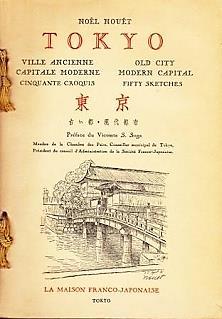

When the war broke out, Noël Nouet chose to stay in Japan and, like many foreigners, ended up being ordered to retire far from Tokyo, to Karuizawa (where he found his compatriot Paul Jacoulet, but the two Frenchmen did not seem to had close ties).
After the war, he resumed his teaching career at Waseda University in Tokyo and had the honor of being chosen in 1951 to teach French to the young Crown Prince Akihito (who would later be emperor from 1989 to 2019). In 1956, he was made Chevalier of the Legion of Honor and a year later the University of Tokyo awarded him the title of Doctor honoris causa for his thesis Edmond de Goncourt et les arts japonais. In 1946 he had published a new collection of drawings, Tokyo, Fifty Sketches, which combines images of the old capital, places devastated by the bombardments and views of the modern city (a new enlarged edition appeared in 1948). The first exhibition of his works took place in December 1950 at the Mannendo Gallery in Ginza. Finally, in 1961, he published Histoire de Tokyo, which was translated into English in 1995 under the title The Shogun’s city, well after his death on October 2, 1969.
Noël Nouet is not the most representative of the Far Eastern movement, but he actively participated in the Franco-Japanese cultural relationship. Literary at heart, he also wanted to be a draftsman, like Georges Bigot in the 19th century. But while this one was interested in the people he met and painted with verve a picture of the society of that time, Noël Nouet preferred to put his footsteps in those of Hiroshige by delivering us, with modesty, nostalgic images for a city on the eve of a profound change.
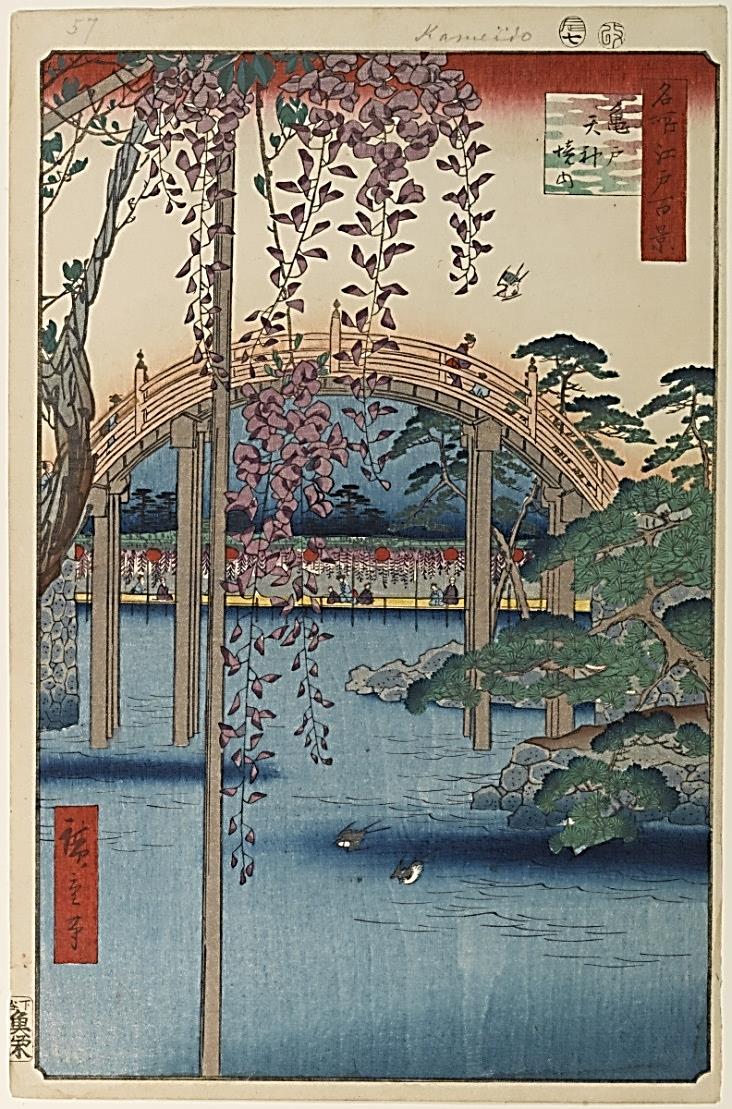
Bibliography :
- Tokyo, Ville ancienne, capitale moderne, cinquante croquis, Maison Franco-Japonaise, Tokyo, 1938
- Tokyo, Fifty Sketches, à compte d’auteur, Tokyo, 1946
- Autour du Palais Impérial, Tokyoshuppan, 1947
- Histoire de Tokyo, Maison Franco-Japonaise-Presses Universitaires de France, Paris, 1961
The collection
